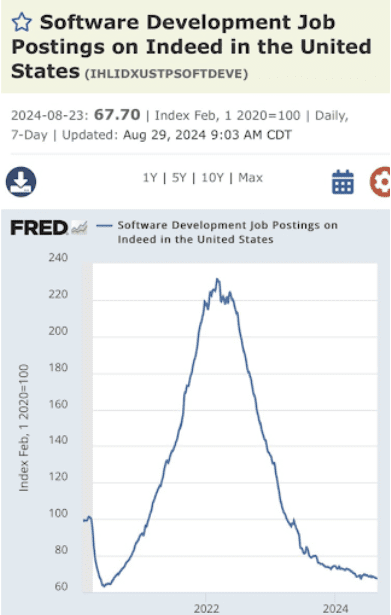Ready for a reality check on talent acquisition? Buckle up. We're about to explore how talent acquisition is evolving from a reactive process to a strategic powerhouse. In the ever-changing landscape of talent acquisition, we're witnessing a significant shift. The old models still exist, but to truly succeed, talent acquisition must become more strategic and proactive. This evolution isn't just a nice-to-have; it's essential for the future of talent acquisition.
The Current State of Talent Acquisition: Breaking Free from Transactional Metrics
Let's be honest for a moment. Many of us have been there – juggling metrics that look impressive on paper but don't always translate to real-world impact. Cost per hire? Time to fill? They have their place, but they're just the tip of the iceberg when it comes to strategic value. Just ask industry veterans like Adrian Thomas and Toby Culshaw – they've been advocating for a deeper approach for years.
The Dawn of a New Talent Acquisition Era
Welcome to the future of talent acquisition, where teams are leveraging data tools, like Horsefly Analytics, to gain a serious competitive edge. Here's how forward-thinking organizations are changing the game:
The days of relying solely on job postings are behind us. It's time to embrace data-driven strategies and start thinking several steps ahead.
Co-founder and ceo at horsefly analytics
1. Forecasting Hire Difficulty at a Skill-Based Level
Here's a key insight: not all roles are created equal, even within the same job title.Traditionally, workforce planning teams map out talent availability and demand. However, it's crucial to have real-time tools to understand the size of the task at hand. Job titles alone don't tell the full story when it comes to hiring difficulty - for instance, Java Developers with SQL skills versus those with GraphDB expertize are worlds apart. Forecasting isn't just for current openings. Forward-thinking talent acquisition teams are applying these insights to roles that are part of their company's future strategy.
2. Exploring Internal Mobility
By understanding the specific skill-based career paths of target talent markets, talent acquisition teams can identify who within the existing organization could potentially fill roles. This approach also allows for expanding addressable market by understanding who typically moves into the positions available to fill.
3. Prioritizing Efforts Based on Hire Difficulty
Understanding the difficulty of hire allows talent acquisition leaders to decide which talent requires the most internal effort and spend. In some cases, it might even lead to reassessing the talent requirements altogether, along with your training and development offerings.
4. Scenario Planning
Many of our talent acquisition clients are now engaging in scenario planning, a practice traditionally associated with workforce planning. This involves building a picture of what your talent market looks like on a global, skill-based level. Some scenarios we've seen include:
-
Assessing internal mobility options - Mapping existing talent against future needs to identify redeployment opportunities within the organization. This approach not only reduces external hiring costs but also improves retention by creating visible career pathways that keep valuable employees engaged and growing.
-
Evaluating remote work strategies - Analyzing how geographic flexibility impacts talent pools, compensation structures, and team performance. Organizations that strategically determine which roles truly benefit from remote arrangements can significantly expand their candidate reach while maintaining the collaborative benefits of in-person work where it matters most.
-
Assessing salary costs - Modeling various compensation scenarios across different locations and skill sets to optimize budget allocation. These projections help organizations balance competitive pay practices with financial sustainability, allowing for strategic investment in critical roles while managing overall labor costs.
-
Expanding the addressable market using adjacent skill sets and job titles - Identifying transferable competencies that can broaden hiring possibilities beyond traditional candidate profiles. This creative approach to talent identification uncovers hidden pools of qualified candidates who may not use standard industry terminology but possess valuable capabilities that can be developed.
-
Analyzing talent competition on a town-by-town basis - Creating detailed geographic heat maps that reveal location-specific talent availability and competitor activity. This granular perspective enables organizations to target their recruitment efforts in areas with optimal balances of skill availability, limited competition, and favorable cost structures.
The Rapidly Shifting Market

The talent market is evolving at breakneck speed. A surface-level analysis of job boards might paint a misleading picture. For instance, a cursory glance at Indeed shows a massive drop-off in Software Developer adverts.

Moreover, these broad trends don't account for emerging roles. Take GAi (Generative AI) engineering positions, which barely existed pre-COVID. While there's still a significant drop-off in traditional software development roles, Q4 and beyond shows exponential demand for these new GAi-related positions.

The key takeaway? The market is moving, and moving fast. For roles like GAi talent, the time to hire is now. As we move into 2025, demand is likely to outstrip supply significantly.
Job titles alone don't tell the full story when it comes to hiring difficulty.
Will Crandle
Co-founder and ceo at horsefly analytics
Conclusion: The New Face of Talent Acquisition
Let's get to the heart of the matter: the Talent acquisition landscape is evolving rapidly. The days of relying solely on job postings are behind us. It's time to embrace data-driven strategies and start thinking several steps ahead. In this new world of talent acquisition, strategic foresight is your most valuable asset.
The most successful talent acquisition teams are those that can forecast hire difficulty, understand skill density, explore internal mobility, and engage in scenario planning. They're the ones using data not just to fill current roles, but to anticipate future needs and market shifts.
Are you ready to evolve your talent acquisition function? The future of hiring is here, and it's more strategic, more data-driven, and more crucial to business success than ever before.
So, here's the question: are you ready to elevate your talent acquisition function to meet these new challenges? The future of hiring is here – it's strategic, it's data-driven, and it's crucial to business success. What steps will you take to stay ahead of the curve?
Get Started With Horsefly Today
